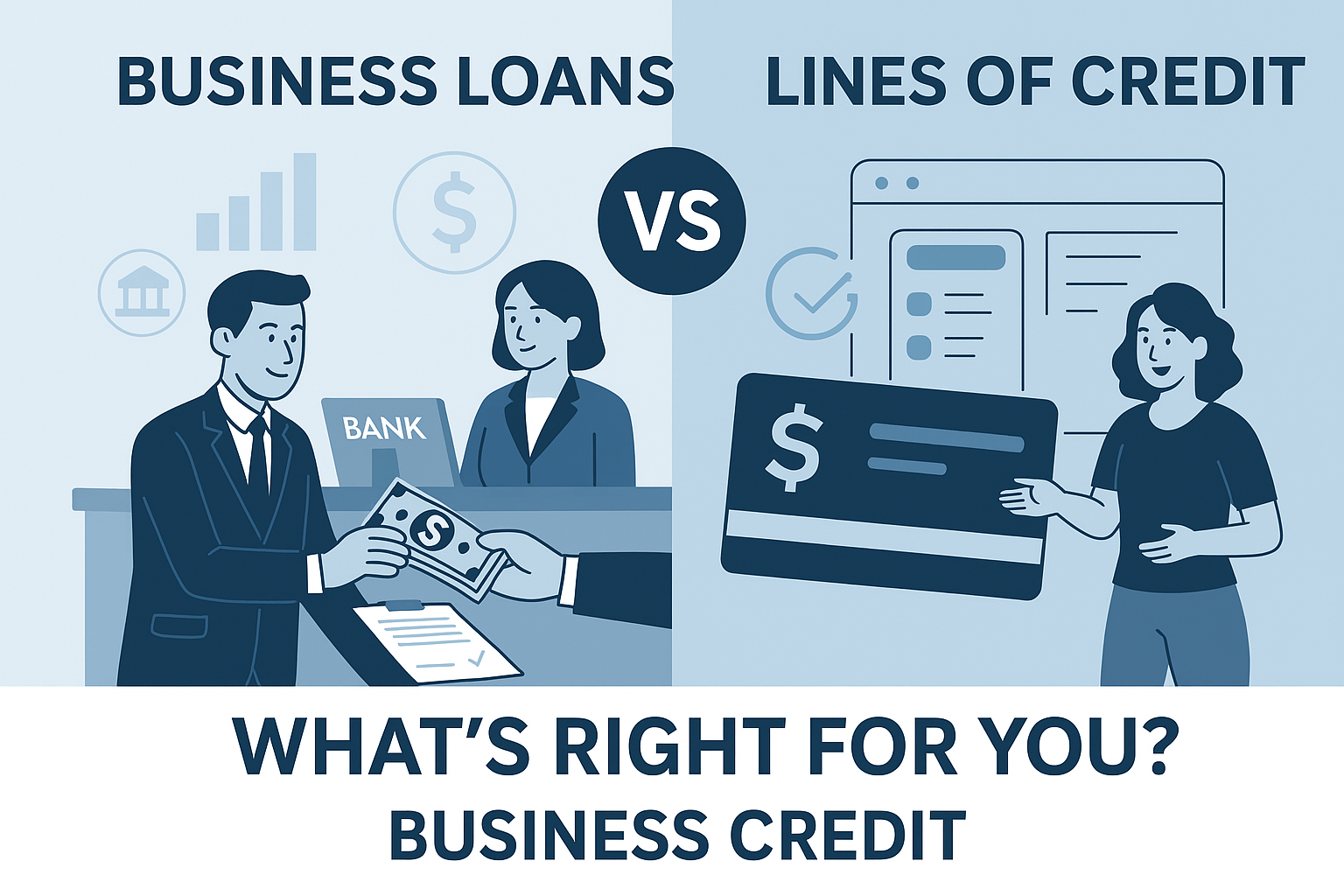What is a Small Business Loan? Terms, Uses & How to Qualify
Published on April 11, 2025

Key Takeaways
- Small business loans provide lump-sum funding with fixed repayment terms
- Loans typically range from $5,000 to $5 million with terms of 3 months to 25 years
- Common uses include equipment purchases, expansion, and working capital
- Qualification requirements include credit scores, time in business, and revenue history
- Several types of loans exist, including term loans, SBA loans, and equipment financing
Understanding Small Business Loans
A small business loan is a fixed amount of money borrowed from a lender that gets repaid over time with interest. Unlike other financing options, loans provide the full amount upfront and come with a structured repayment schedule.
Think of small business loans as buying a car rather than renting one. You get full ownership and use of the funds from day one, and you make consistent payments until the debt is paid off.
These loans fund thousands of businesses each year. The bakery down the street might have used one to buy new ovens. The local contractor probably used one for trucks and heavy equipment. Even professional service firms use loans to fund office build-outs and expansions.
The typical structure includes:
- Principal amount: The sum you borrow
- Interest rate: The cost of borrowing (fixed or variable)
- Term length: How long you have to repay (months or years)
- Payment frequency: Usually monthly, sometimes weekly
- Fees: May include origination fees, closing costs, etc.
Small business loans come in amounts typically ranging from $5,000 to $5 million, with terms spanning from a few months to 25 years, depending on the loan type and purpose.
I've helped many business owners secure funding, and loans consistently offer the lowest rates for businesses that can qualify. However, they also require more documentation and longer approval processes than some alternatives.
Types of Small Business Loans
Several loan varieties exist, each designed for specific business needs:
Term Loans
The standard business loan with a fixed amount, set repayment period, and regular payment schedule. Terms typically range from 1-5 years for general business purposes.
SBA Loans
Government-backed loans with favorable terms, including lower down payments and longer repayment periods. These include popular programs like SBA 7(a) and SBA 504 loans.
Equipment Financing
Loans specifically for purchasing business equipment, where the equipment often serves as collateral. Terms usually match the equipment's useful life.
Invoice Financing
Allows businesses to borrow against their outstanding invoices, improving cash flow while waiting for customer payments.
Working Capital Loans
Short-term loans designed to cover day-to-day operational expenses like payroll, rent, and inventory. Often feature faster approval times.
Commercial Real Estate Loans
Used to purchase, develop, or refinance commercial properties. Typically involve longer repayment terms.
One restaurant owner I worked with used an equipment loan for kitchen equipment, which had a 5-year term matching the expected useful life of the equipment. Meanwhile, she used an SBA loan with a 10-year term for building renovations, aligning the longer-term investment with extended repayment options.
Not sure if a loan is right for you? Learn how a line of credit compares.
Common Uses for Small Business Loans
Small business loans fund a wide range of business activities:
Equipment Purchases
From computers and vehicles to specialized machinery, equipment loans help businesses acquire necessary tools without depleting cash reserves.
Business Expansion
Funding for opening new locations, renovating existing spaces, or expanding product/service offerings.
Working Capital
Covering day-to-day operating expenses like payroll, rent, utilities, and marketing during slow periods or growth phases.
Inventory Purchases
Buying stock, especially for seasonal businesses or to take advantage of bulk discounts.
Hiring Staff
Covering the costs associated with recruiting, hiring, and training new employees to support growth.
Debt Refinancing
Consolidating higher-interest debts into a single loan with potentially lower payments or better terms.
Business Acquisition
Financing the purchase of an existing business.
One manufacturing client used a term loan to purchase specialized equipment that immediately increased production capacity by 40%. The loan payments were less than the additional profit generated, making it a smart financial decision that would have been impossible without financing.
Qualification Requirements
Lenders evaluate several factors when considering small business loan applications:
- Credit Scores: Both personal and business credit scores matter. While requirements vary, most traditional lenders look for personal scores above 680 and strong business credit profiles.
- Time in Business: Established businesses face fewer hurdles. Most lenders prefer businesses operating for at least 2 years, though some alternative lenders work with newer businesses.
- Annual Revenue: Lenders want to see consistent revenue generation. Minimum requirements vary widely based on the loan type and lender ($100k+ annually is a common baseline).
- Profitability: Demonstrating profitability strengthens your application, though some loans are available for businesses experiencing temporary downturns.
- Cash Flow: Lenders analyze your cash flow statements to ensure you can comfortably handle loan payments (Debt Service Coverage Ratio).
- Collateral: Secured loans require assets (like real estate or equipment) to back the loan, reducing lender risk and potentially improving terms. Unsecured loans don't require specific collateral but often have stricter requirements or higher rates.
- Business Plan: Especially for larger loans or newer businesses, a solid business plan outlining strategy, market analysis, and financial projections is crucial.
A retail client with three years in business, $350,000 in annual revenue, and a 720 credit score easily qualified for traditional bank financing. Meanwhile, a newer business with similar revenue but only one year of history needed to work with an alternative lender at slightly higher rates.
Still comparing options? Check out our full breakdown of business loans vs. lines of credit.
Application Process
The application process typically follows these steps:
- Preparation: Gather financial statements (profit & loss, balance sheet, cash flow), tax returns (personal and business), business plans, bank statements, and legal documents like articles of incorporation.
- Shopping Lenders: Compare options from banks, credit unions, online lenders, and specialized financing companies like Khojie. Consider rates, terms, fees, and qualification requirements.
- Application Submission: Complete the chosen lender's application form, providing detailed information about your business, the loan amount requested, and its intended use.
- Documentation Review & Underwriting: The lender reviews your submitted documents, verifies information, analyzes your financial health, and assesses the risk associated with the loan.
- Approval & Offer: If approved, the lender provides a loan offer detailing the amount, interest rate, term, fees, and any conditions (like collateral requirements).
- Closing & Funding: Review and sign the final loan agreement. Once complete, the funds are disbursed to your business bank account.
The timeline varies significantly. Bank loans might take 3-6 weeks from application to funding, while some online lenders can complete the process in days.
Tips for Success
From my experience helping businesses secure funding, these strategies improve your chances:
- Clean up your credit before applying. Even small improvements to your score can mean better rates.
- Prepare a clear explanation of how you'll use the funds and how they'll benefit your business. Lenders favor loans that will strengthen your business.
- Organize your financial documents thoroughly. Having everything ready speeds up the process and shows professionalism.
- Know your numbers. Be prepared to discuss your revenue, profits, cash flow, and projections confidently.
- Shop around, but don't apply everywhere at once, as multiple hard credit inquiries can lower your score.
- Be honest and transparent with lenders about your business's situation and challenges.
Conclusion
Small business loans provide structured funding solutions for specific business needs. Their predictable nature makes them ideal for planned investments where you know exactly how much you need and when you can repay it.
Understanding the various loan types and requirements helps you approach lenders with confidence and secure the financing that will help your business thrive.
Ready to explore your options?
Apply now to get personalized loan recommendationsExplore term loans and other funding options to find the perfect fit for your business needs.




